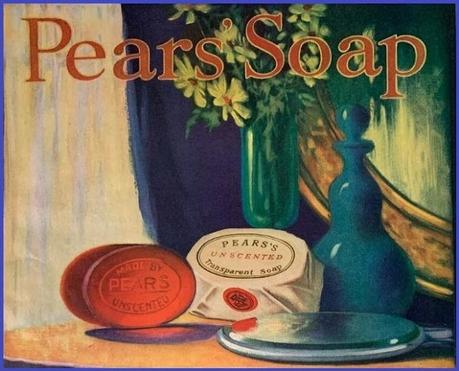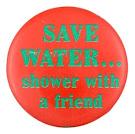Fast-forward through aeons of infrequent and ineffective bathing and eventually along came soap - from Mesopotamia in approx. 2800BC, followed by opera - Italy 1600 AD, and finally soap operas - USA 1930.
I have no great interest in opera (sincere apologies for that), and even less in soap operas (no apologies there - though I did enjoy Coronation Street in its early, grainy and gritty years). And by the way, if you were hoping to read about Simple Object Access Protocol (an XMS-based information exchange mechanism allowing the distributed elements of an application to communicate), then I'm sorry, you've landed on the wrong blog.So having come clean about all that, let's get stuck into soap. What is it exactly? Technically, it's a salt of a fatty acid (I know, that doesn't sound very promising), a mixture of fat and oil combined with a base. Together they make a surfactant that when mixed with water during washing or bathing produces a lather that has the effects of solubilising (i.e. making soluble in water) those particles of grease, grime or sweat that were adhering to skin or articles of clothing, of killing micro-organisms and of emulsifying any oils, thus detaching them to be washed away in the water, leaving skin or clothing clean and pleasant smelling.The earliest soaps, from the Middle East, were made from a mixture of oil (usually cypress or olive oil) plus potash and an aromatic herb (such as lavender or yarrow) for fragrance. The mixture would be poured into a mold and left to cool and harden for a couple of weeks before being cut into small cakes or tablets. An industry was born, and those who could afford it became less pongy. Thank goodness for that.The basics haven't changed much in nearly 5,000 years, although the ingredients and the processes (along with the marketing) have become more refined. I'm supposing that, being creatures of choice and habit, we all have our favorite soaps: Camay, Dial, Dove, Fanny (Savon de Marseille, I kid you not), Imperial Leather, Knight's Castile, Lifebuoy, Lux, Palmolive, Roger & Gallet, Wright's Coal Tar or what you will. Mine is Pears.
It was developed by Andrew Pears at the beginning of the 19th century as a gentler alternative to the somewhat harsh soaps that were in general use. It was based on glycerine and other natural products, and as if to emphasize its purity, it was the first transparent soap. It was also manufactured in oval bars. Both novelties proved a distinct marketing advantage. Although it was branded 'unscented', apparently it did have the "pleasing aroma of an English country garden" (not that I'd describe its contemporary aroma that way). First produced and sold in London by A & F Pears in 1807, its purity appealed to the bathing classes, especially when endorsed by such luminaries as actress Lillie Langtry, and it regularly won awards from the Great Exhibition of 1851 onwards.Pears soap continued to be manufactured at Isleworth in west London even after Port Sunlight based Lever Brothers took control of the company in the 1920s, and only when that London factory was destroyed by fire in the 1960s did production transfer north to Unilever's Port Sunlight facility. I first started using it shortly after that, upon leaving behind the parental home with its Camay or Imperial Leather. It's been my soap of choice ever since.
There was an attempt to phase it out after the millennium, but the backlash from consumers was such that Unilever reprieved the brand. I can remember stocks running low and stories about people scouring out-of-the way supermarkets and chemists' shops to get their hands on their favorite soap. Nowadays Pears soap is manufactured entirely in India, by Hindustan Unilever in Mumbai, and is exported all over the world.
As it states on the box: "Pears, a soap with over 200 years of heritage, is prepared with a unique process of moulding & then matured until it reaches pure transparency. Each bar is still made with natural oils and filtered for purity. It is then finished by hand & checked by eye. So what you get in the end is a beautiful pure & gentle soap." Long may that continue to be the case.

I wasn't sure I'd write a new poem for this week's blog but in the end I've come up with the following (which may get improved upon in due course), a sly and affectionate recollection of many dutiful endeavours to 'Save Water...' By the way, the button is courtesy of the delightfully-named Busy Beaver Button Museum.

Shower With A FriendIs this the kind of intimacy the authorities had in mindwhen they exhorted us during the great drought of '76 to save water by bathing with a friend? I don't do baths
as they're so wasteful in the first place, but will happilyshare the space with my graceful lady, love that slidingsoapy caress of torsos and limbs, a glycerine-enhanced
hands-on appreciation of the sculptural beauty of formand almost a sacred rite, but a sensual caring one filledwith bubbles of laughter and lather as we slide beneath
the cascade. And when we emerge clean and gleamingwhile the last suds drain away it feels like we're reborn,so thank you Water Board, Pears' soap and Multi-spray.

Thanks for reading, S ;-)
Email ThisBlogThis!Share to TwitterShare to Facebook